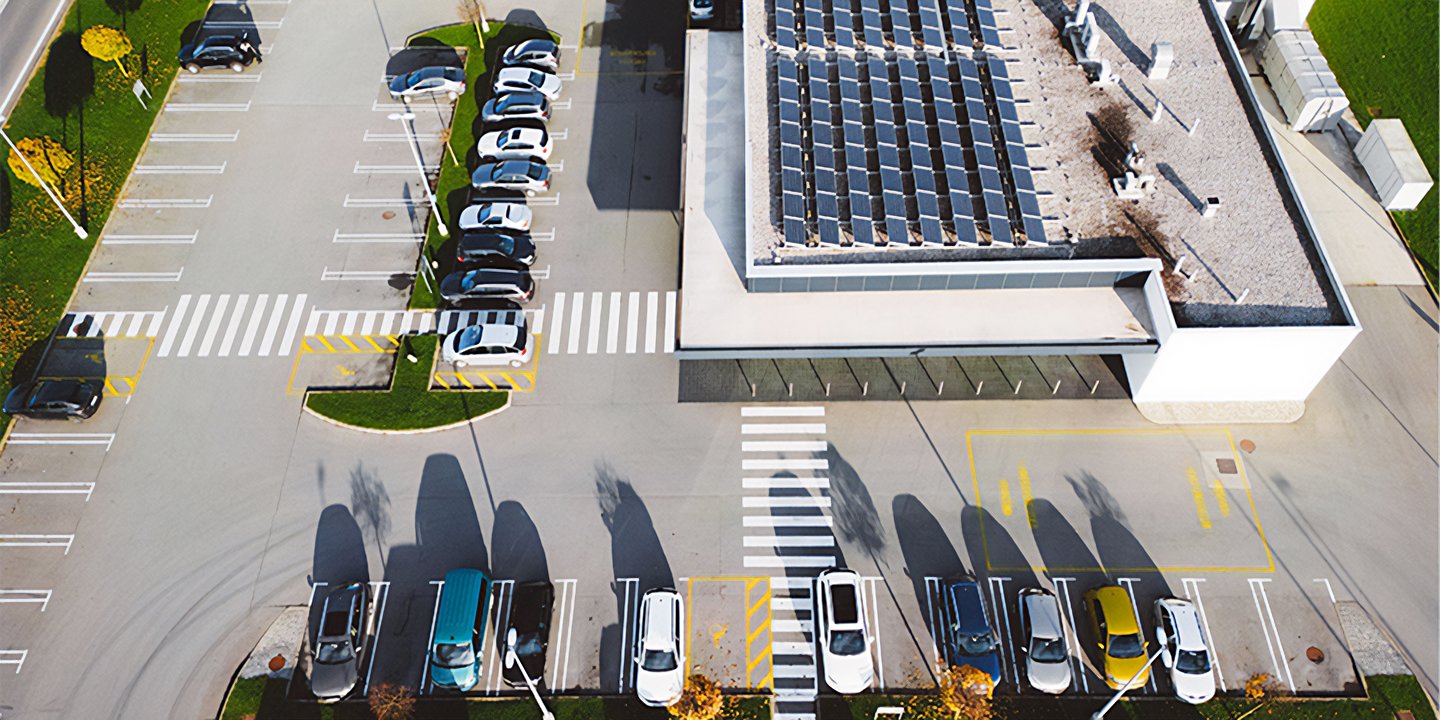Exploring the transition to solar technology systems
Climate and EnergyArticleJuly 18, 2023
Businesses large and small are considering investing in solar (Photovoltaic [PV] systems) to reduce their energy costs and carbon footprint. Now, with the introduction of federal investment and production tax credits for businesses that own solar technologies, solar is good for business and good for the environment. If you are exploring the possibility of a commercial solar installation, there are some important considerations to evaluate to help mitigate potential risks associated with solar systems.
The first is the type of system to suit your needs. There are two options for mounting solar panels: ground-mount and roof-mount.
Ground-Mount Solar Systems
Ground-mount systems can offer a much lower risk to facilities than roof-mount because ground-mount systems keep the energy associated with this power generation technology away from the building(s) thereby protecting essential business assets from fire, ventilation problems, drainage issues, and overheating. However, ground-mount systems require an area of the property on which they can be installed.
Roof-mount systems have become increasingly popular due to their lower profile - being installed on an existing and available surface, the roof. Roof-mounted systems, however, can present significantly greater risk. For example, a typical building roof has few sources of ignition; however, a rooftop PV system may introduce many potential fire ignition sources. In fact, PV system installation defects are a common cause of PV system fires. Roof-mount systems can also be vulnerable to overheating and weather-related risks from rain, wind, and snow.
Roof-Mount Solar Systems
If you are exploring roof-mount solar design and installation, there are several risks these systems can present, with fire perhaps the most common and costly risk to the business. Proper PV system design, installation, and operation and proper roof design and construction are necessary to reduce the likelihood of a solar panel fire, and to extend the life of the system. Assessment of these is an essential first step in planning for any transition to solar-generated technology/PV systems, including:
Roof
The condition of the roof is one of the most important factors to evaluate when planning a transition to solar. Some considerations include, but are not limited to:
- Fire - Avoid installing PV modules on roofs with wood decks, expanded or extruded polystyrene roof insulation, or EPDM (rubber) membrane roof covers. The concern is these materials may promote greater fire spread, including fire spread into the building.
- Wind - Avoid installing PV modules on roofs with mechanically fastened single-ply roof membranes. During high winds, these membranes will billow upward, causing PV modules to slip and slide. The concern is physical damage to modules or wires.
- Roof age - Avoid installing PV modules on roofs that have not been recently installed or recovered. This will hopefully avoid the expense of removing and reinstalling a PV system just to replace an aged and failing roof cover.
Contract
- Hire an experienced contractor, one who has a proven track record installing Photovoltaic Systems.
- Seek a contract with a single party to design, install, operate, monitor, and maintain your PV system. This may help to reduce questions about who to call when you need help.
Design considerations
- Comply with all applicable local codes and standards. In addition, consider the guidance of the latest editions of NFPA 1 (Fire Code) and NFPA 70 (National Electrical Code).
- Select PV system components that are listed by a nationally recognized testing laboratory, and verify they are listed for use together.
- Keep PV modules at least 4 feet away from roof penetrations such as expansion joints and roof drains. These may be points where a PV fire could spread into a building.
- Keep PV modules at least 10 feet away from skylights or smoke and heat vents that have combustible features such as plastic domes. Again, these may be points where a PV fire could spread into a building.
Installation
- Include an independent quality assurance person to verify the PV system is installed in a professional manner. For example, the person may: Confirm the installed system complies with the design documents
- Verify wiring connectors are protected from the elements while they are open
- Identify damaged components or pinched wires and verify corrective action
- Verify commissioning has been completed
Management
- Assign an employee to control roof access. Assign that person to escort contractors accessing roofs, especially where the contractor is not qualified to work on PV systems. Monitor contractors’ activities to avoid physical damage to the PV system.
- Periodically inspect the rooftop for vegetation or debris and arrange for such materials to be removed in a timely manner.
Operation
- Have the PV contractor perform service at least annually. In addition, include inspections after severe weather events such as high winds and hailstorms.
- During the annual inspection, include a check for recalled system components and schedule timely maintenance to replace recalled components.
Emergency
Invite your local public fire service and PV system contractor to develop a pre-fire plan for your facility and the PV system. Have the contractor introduce the fire service to your system, provide the needed documentation, and explain the operation of the fire service “module-level rapid shutdown switch” that is intended to reduce the level of DC voltage on the roof before firefighter access.
Zurich Risk Engineering specialists are an available resource should your dealership choose to install solar panels. Our team of specialists can walk through an assessment of your property, building and roof construction, discuss your plans, and offer guidance as you explore your transition to solar.
Contact Zurich Risk Engineering to learn more by phone: 800-982-5964 or by email: risk.engineering@zurichna.com
